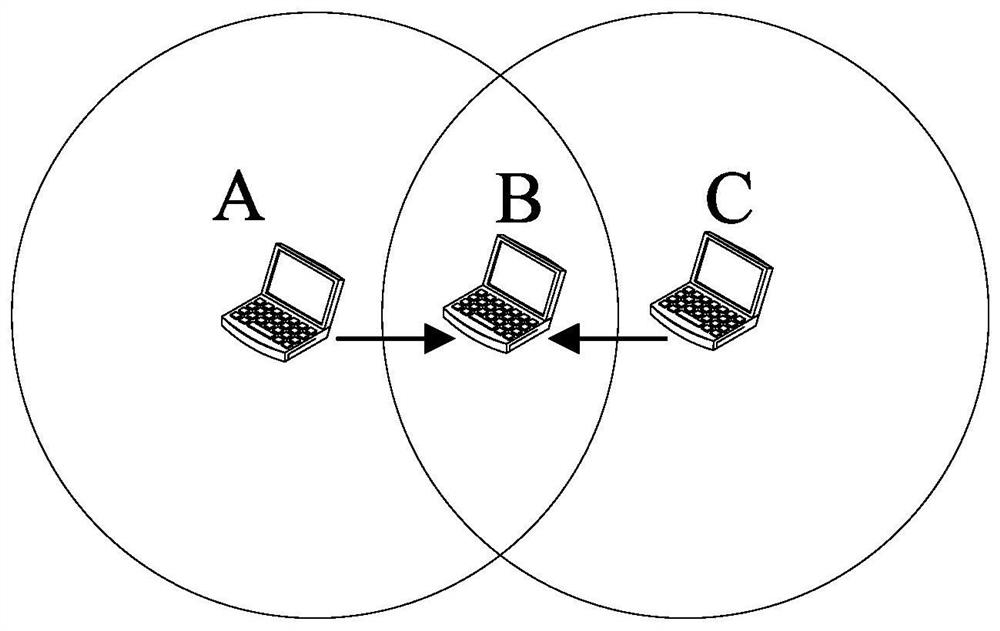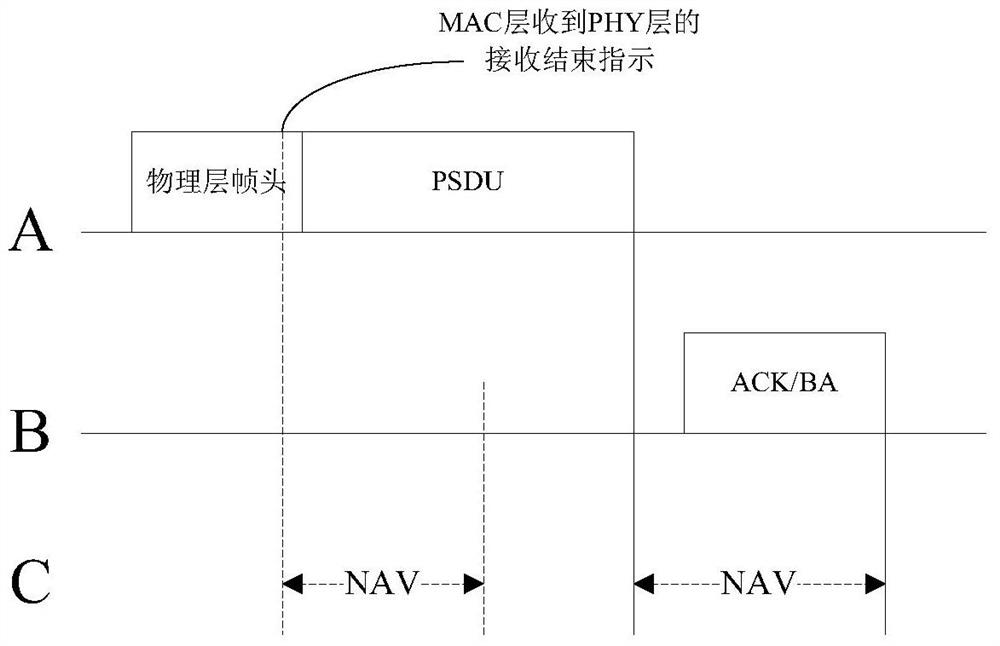Method and device for processing network allocation vector nav
A technology of network allocation vector and processing method, which is applied in the field of network allocation vector NAV processing method and device, which can solve the problems of inaccurate NAV update, hidden site collision, etc., and achieve the effects of reducing collision, ensuring accuracy, and ensuring fairness
- Summary
- Abstract
- Description
- Claims
- Application Information
AI Technical Summary
Problems solved by technology
Method used
Image
Examples
Embodiment 1
[0076] In this embodiment, AP1, STA1, and STA2 form a BSS. After the sending station STA1 obtains the transmission opportunity, it sends HE SU PPDU (corresponding to the above-mentioned first radio frame), AP1 is the target receiving station, and STA2 is the listening station (corresponding to the above-mentioned first station). When STA1 sends the above-mentioned HE SU PPDU, it will indicate the transmission opportunity duration TXOP_DURATION, the basic service set identifier (BSS color) and the uplink and downlink indications in the HE-SIG-A of the above-mentioned HE SU PPDU.
[0077] When STA2 judges that the radio frame is HE SU PPDU through the preamble information, and STA2 has received the HE-SIG-A of the HE SU PPDU, and the verification detection is correct, it judges that it is not the target receiving station of the HE SU PPDU. Then STA2 decides to terminate the end early, and calculates the duration RTIME(us) of the remaining part of the radio frame. The calculation...
Embodiment 2
[0083] In this embodiment, AP1, STA1, and STA2 form a BSS. The sending station STA1 sends the HE Trigger-based PPDU (corresponding to the above-mentioned first radio frame), AP1 is the target receiving station, and STA2 is the listening station (corresponding to the above-mentioned first station).
[0084] When STA2 judges that the radio frame is HE Trigger-based PPDU through the preamble information, and STA2 has received the HE-SIG-A of the HETrigger-based PPDU, and the verification and detection are correct, it judges that it is not the target receiving station of the HE Trigger-based PPDU. Then STA2 decides to terminate the end early, and calculates the duration of the remaining part of the radio frame. The calculation method is as follows:
[0085] RTIME=RXTIME-T L-STF -T L-LTF -T L-SIG -T RL-SIG -T HE-SIG-A
[0086] Then, STA2 calculates the final value used to update NAV by the following formula:
[0087] TXOPTIME=RTIME+TXOP_DURATION;
[0088] STA2 uses TXOPTIME...
Embodiment 3
[0090] In this embodiment, AP1, STA1, and STA2 form a BSS. After the sending station STA1 obtains the transmission opportunity, it sends the HE Extended Range SU PPDU (corresponding to the above-mentioned first radio frame), AP1 is the target receiving station, and STA2 (corresponding to the above-mentioned first station) is the listening station. When STA1 sends the above-mentioned HE Extended Range SU PPDU, it will indicate the duration of the transmission opportunity, the basic service set identifier (BSS color) and the uplink and downlink indications in the HE-SIG-A of the above-mentioned HE Extended Range SU PPDU.
[0091] When STA2 judges that the radio frame is an HE Extended Range SU PPDU through the preamble information, when STA2 has received the repeated HE-SIG-A of the HE Extended Range SU PPDU, and the HE-SIG-A check is correct, it judges that it is not the HE Target receiving site for Extended Range SU PPDUs. Then STA2 decides to terminate the end early, and cal...
PUM
 Login to View More
Login to View More Abstract
Description
Claims
Application Information
 Login to View More
Login to View More - Generate Ideas
- Intellectual Property
- Life Sciences
- Materials
- Tech Scout
- Unparalleled Data Quality
- Higher Quality Content
- 60% Fewer Hallucinations
Browse by: Latest US Patents, China's latest patents, Technical Efficacy Thesaurus, Application Domain, Technology Topic, Popular Technical Reports.
© 2025 PatSnap. All rights reserved.Legal|Privacy policy|Modern Slavery Act Transparency Statement|Sitemap|About US| Contact US: help@patsnap.com



